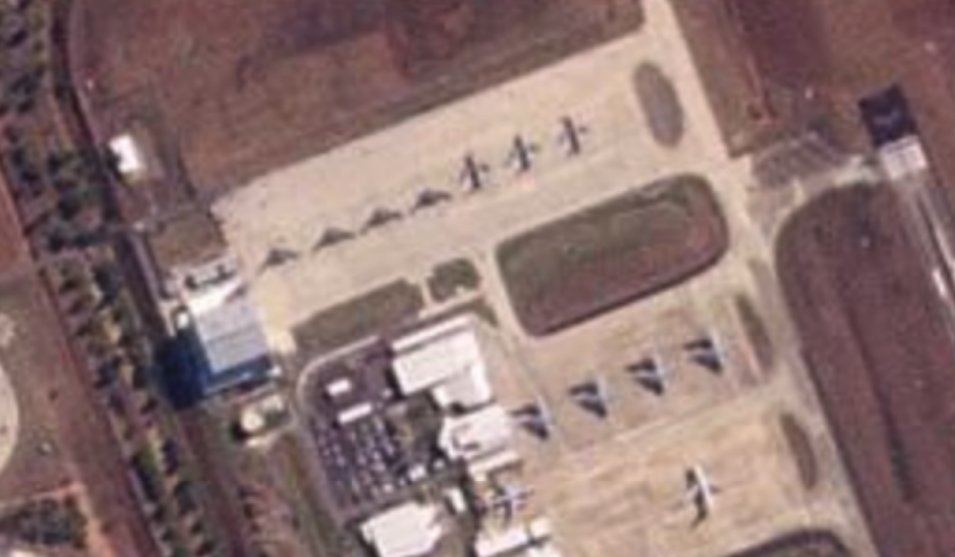Satellite imagery has emerged showing four US Air Force’s nuclear-capable B-2 Spirit stealth bombers parked in a straight line at the Royal Australian Air Force’s (RAAF’s) Amberley airbase in Queensland.
Taiwan’s ‘Strawberry Soldiers’ Who Eat Hamburgers To Gain Weight & Avoid Military Service Ready For China War?
Faster Than The Fastest Supercomputer, Brain-Cell Powered AI Raises Technical, Ethical & Political Concerns
The image from Planet Labs was shared on social media by The War Zone. The USAF operates a total of 20 B-2 bombers, meaning four represent one-fifth of the USAF’s total B-2 fleet currently deployed in Australia, which is unprecedented.
The four B-2s in question belong to the 509th Bomb Wing at Whiteman Air Force Base, Missouri, to support a Pacific Air Forces Bomber Task Force. The first two of them had arrived at Amberley on July 10, while the second batch of B-2s arrived on July 12.
20% of the B-2 Spirit fleet on deck at RAAF Amberley a couple days ago. pic.twitter.com/pmV5KSKl0i
— Tyler Rogoway (@Aviation_Intel) August 1, 2022
B-2s have been deployed to Australia before, but this is the first deployment of the bombers as part of the Bomber Task Force (BTF), according to Janes. The deployment will last until the end of August.
B-2 Bombers Train With Australian Air Force
This BTF deployment is part of the Enhanced Air Cooperation Initiative under the Force Posture Agreement between the US and Australia, which includes rotational deployment of US aircraft of all types in Australia for joint training and exercises with the RAAF.

A spokesperson from the Australian Department of Defense (DoD) told Janes that the B-2s, throughout July and August, will be involved in various Australian Defense Force (ADF) exercises such as ‘Koolendong’ and Exercise’ Arnhem Thunder.’
The Koolendong 2022 just concluded at the end of July, with the soldiers from the Australian 13th Brigade battling the fictional enemy played by the US. B-2 bombers also participated in the exercise, as seen in the images showing multiple B-2 aircraft flying with Australian F-35s over Curtin Air Base.
“Training and operating with our Australian partners has been an absolute blast,” said Lt. Col. Andrew Kousgaard, Commander of 393rd Expeditionary Bomb Squadron, in a USAF statement released on July 12.
“Since our advance team hit the ground over a week ago, US Airmen have integrated with their Australian counterparts in every specialty: fuels, logistics, maintenance, aviators, you name it.”
Kousgaard further said that the B2s will also conduct engines-running refueling with Australian equipment and air refueling with the Australian KC-30s while noting, “It’s important for us to demonstrate that we can accomplish that mission from diverse locations in the largest combatant command in the world, and that’s exactly what we’re doing here.”
He explained that the only way to learn and improve “is to actually deploy and practice,” as “we simply cannot operate effectively by ourselves in this environment, and learning to integrate with our partners effectively is absolutely critical to success.”
“We’re training against that ‘tyranny of distance,’ alongside our Australian partners on this deployment, and that experience is truly invaluable,” Kousgaard continued.
According to Kousgaard, this deployment of the B-2 to Australia demonstrates and enhances the readiness and lethality of the US’ long-range penetrating strike force.
Recent months have seen the increased deployment of USAF B-2s in Australia. For example, in March, a USAF B-2 Spirit conducted a mission in the Indo-Pacific with five different fighter aircraft, which included two F-35As, two EA-18 Growlers, and two F/A-18F Super Hornets from the RAAF, two F-16Cs, and a KC-135 tanker from the USAF, as per a Eurasian Times report.
Nuclear-capable B-2 Bombers – A Strong Message To China
The growing presence of the USAF’s nuclear-capable B-2s in the Indo-Pacific sends a powerful message to China, considering B-2 bombers are one of the three legs of the US nuclear triad.
The message cannot come at a better time than now, when the tensions in the Indo-Pacific are at an all-time high due to Chinese military drills in waters surrounding Taiwan in response to US House Speaker Nancy Pelosi’s arrival on the island by aircraft on August 2, despite several warnings from China.
The People’s Liberation Army Navy has launched a massive naval exercise in five areas around Taiwan that overlap with the island nation’s territorial waters. The exercise includes live firing drills that have forced the commercial shipping and airline traffic to re-route to avoid the military exercises.
Also, many airlines have reportedly canceled flights to or from Taiwan through the end of August for unspecified reasons, according to the South China Morning Post (SCMP).
Therefore, the PLA Navy’s military drills have sparked fears of shipment delays not only in Taiwan but also in Japan and South Korea, potentially leading to an increase in transport costs.
According to Ambrose Linn, a former Hong Kong Logistics Development Council member, logistics expenses could rise by 10%. He said that urgently needed goods would be shifted from ships to planes for expedited delivery to Taiwan.
“The more immediate consequences of China’s retaliation to the [Pelosi] visit … relate to regional trade and shipping patterns, given that China’s planned live-fire exercises are occurring in an incredibly busy waterway,” Nick Marro, lead analyst with The Economist Intelligence Unit’s forecasting and advisory service, said in a research note, cited by the SCMP.
“The shutting down of these transport routes – even temporarily – has consequences not only for Taiwan but also trade flows tied to Japan and South Korea,” Marro said.
These fears are not unwarranted, as five ballistic missiles fired by China as part of the ongoing live fire drills landed in Japan’s exclusive economic zone (EEZ) for the first time on August 4, according to Japan’s defense minister, Nobuo Kishi, who said that Japan had protested with China through diplomatic channels.
- Contact the author at tanmaykadam700@gmail.com
- Follow EurAsian Times on Google News